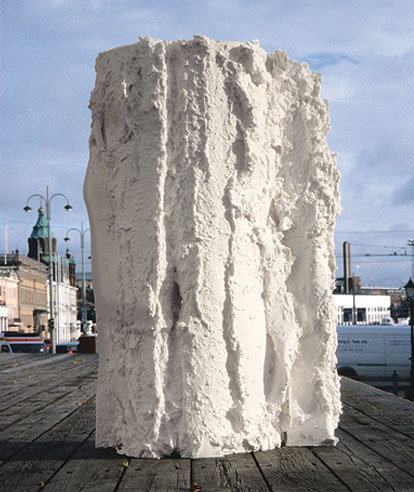
Watercolor turned into relief and sculpted paper.
The recent works prepared for this exhibition move yet
another step further and utilize the interaction of cellulose
fibres and various processes. Paper as a ground of artistic
represen-tation is replaced by large sheets and blocks of
cellulose, the intermediate material of the production of paper.
The delicate movement of the artist´s brush is replaced by
the forceful action of an axe and the semi-autonomous processes
of carving, soaking and burning. The blade of the tool, coloured
liquid or fire carve violently their way into innocent whiteness of
the cellulose blocks. Snow is set on fire, white corrodes into
black, light erodes into shadow. In some of Heuwinkel´s
pieces cellulose is used as a material for moulding, a fibrous
white clay, as it were.
His recent works are images of primordial geology. These
traces and signs of processes lead one´s thoughts to the
images of animals and men painted six thousand years ago
on a vertical rock face in the vicinity of the Verla Mill. Or are
they, perhaps, traces of sacrificial offerings? The image of
white paper is so persistent, however, that even these
products of physical processes still continue to read as
watercolours.
Prof. Juhani Pallasmaa, 2001
